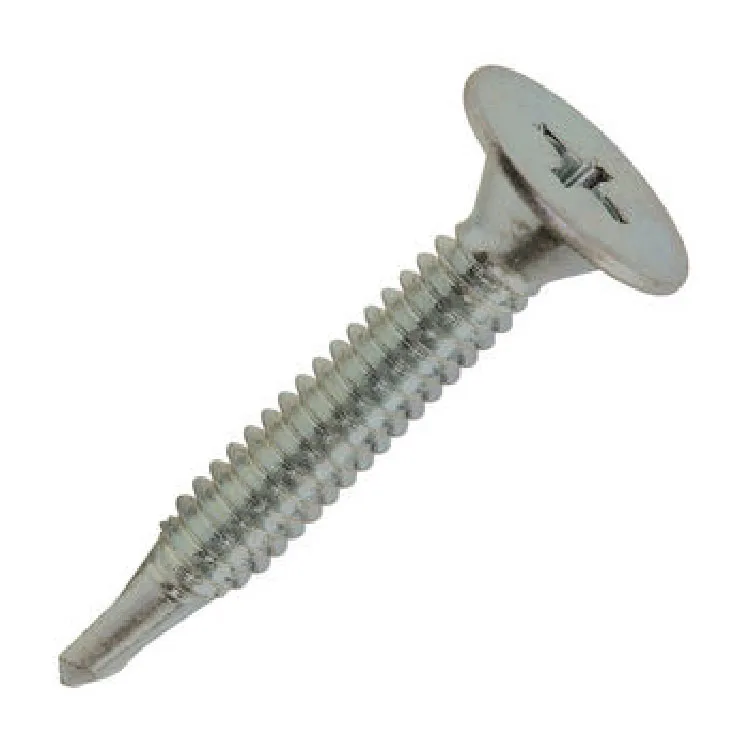How does a self-drilling screw work?
2024-12-07
A self-drilling screw is designed to drill its own hole into a material and secure itself without the need for a separate pilot hole. This makes it a highly efficient fastening solution, particularly for materials like metal, wood, or plastic. Here’s how it works:
Key Features of a Self-Drilling Screw
1. Drill Tip:
- The screw has a pointed tip that resembles a drill bit.
- This tip cuts into the material and creates a hole as the screw is driven.
2. Thread Design:
- The threads follow immediately after the drill tip.
- They engage with the material to pull the screw in tightly as it drills.
3. Material Compatibility:
- These screws are typically made of hardened steel, stainless steel, or other robust materials to handle high torque and resist wear.
4. Flutes on the Tip:
- The tip may include flutes that remove debris created during drilling, allowing the screw to continue cutting effectively.

How It Works
1. Starting Point:
- Place the self-drilling screw at the intended fastening point.
- Begin driving the screw with a drill or screwdriver.
2. Drilling Action:
- The drill tip penetrates the material, creating a clean hole.
- This eliminates the need for a separate drill bit or pilot hole.
3. Thread Engagement:
- As the screw progresses, the threads cut into the hole walls.
- The screw is pulled into the material securely, forming a tight grip.
4. Final Tightening:
- Once the head of the screw is flush with or countersunk into the surface, the fastening process is complete.
Applications of Self-Drilling Screws
- Construction: Fastening metal roofing or siding.
- Automotive: Securing metal panels or components.
- HVAC Systems: Fixing ductwork and other structures.
- Furniture Assembly: Joining metal or wooden components.
Advantages of Self-Drilling Screws
- Efficiency: Eliminates the need for separate drilling and fastening tools.
- Versatility: Suitable for various materials and thicknesses.
- Clean Results: Minimizes damage to the material by creating precise holes.
- Time-Saving: Simplifies installation and reduces labor time.
Tips for Using Self-Drilling Screws
- Use the correct screw size and type for your material.
- Apply consistent pressure to avoid stripping the threads.
- Use a power tool with variable speed for better control.
Self-drilling screws combine drilling and fastening in one step, making them an invaluable tool for professionals and DIY enthusiasts alike.


